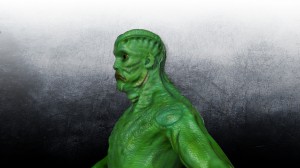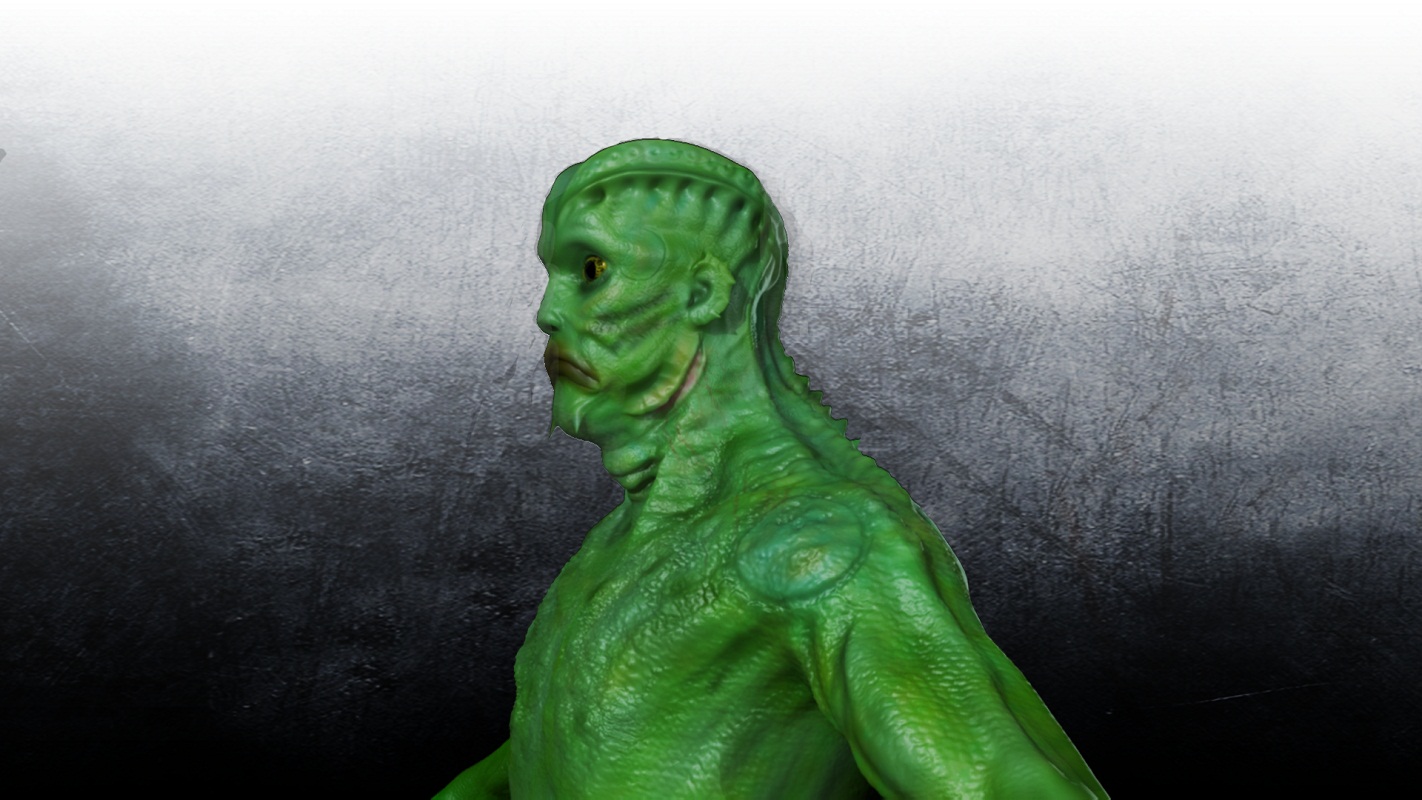Research by: Dr. Herbert K. Bloch, Chief Physician, Shikellamy Asylum, Dellville, PA
Transcribed and submitted by: Fred S. Lubnow, Ph.D.
Illustration by: Steve Maschuck
This short paper provides the results of hopefully the first in a series of investigations into the hybridization of humans (Homo sapiens) and deep ones (Homo aquatium). While this unique type of hybridization has been documented on an individual and, on a more limited extent, population level, little is known of it on the genetic level. As the author of this paper, I have had the opportunity to collect biological samples from a number of residents of Innsmouth, Massachusetts, at various stages of the hybridization process, which is more aptly defined as a form of complete metamorphosis (see below).
Hybridization of distinct species is not unique in Terran animal life. An aquatic example of hybridization is the hybrid striped bass, which is typically produced by fertilizing eggs from white bass (Morone chrysops) with sperm from striped bass (Morone saxatilis). While the hybrid of these two species is sterile, which is very typical of hybrids, it tends to be very aggressive in its feeding habits, making it a desirable gamefish. In addition, the hybrid striped bass is also prized for its tasty flesh and is frequently commercially raised and sold to restaurants. What is unique relative to the human-deep one hybrid (see attached illustration) is that the offspring are presumed to be fertile and can produce progeny after the metamorphosis is complete. Thus, this unique inter-species crossing may not be appropriately defined as an inter-species hybridization.
As previously noted, I intentionally place the deep ones in the same genus as humans (Homo) but as a distinct species. This is in sharp contrast to the Wilmarth Foundation’s previous taxonomic description, where the deep ones were placed in an entirely different genus, family, order, and even class relative to humans. This revision that I propose is due to the recent genetic comparisons and analyses I have conducted using standard DNA to DNA hybridization methodology. Specifically, based on this methodology, the genetic difference between humans and the common chimpanzee (Pan troglodytes) is less than 2%. However, using the same methodology, I have determined that the genetic difference between humans and deep ones is less than 1%. In other words, humans are more closely related to deep ones from an evolutionary perspective than they are to chimps.
What is even more startling is that both humans and deep ones each have twenty-three pairs of chromosomes, while chimpanzees have twenty-four pairs. In addition, the human and deep one chromosome pairs are very similar in arrangement, size, and structure. Thus, while not directly observed, such an arrangement must make meiosis and subsequent fusion of sexual gametes (i.e., sperm and egg) between a human and a deep one a frequently successful process, at least from a physiological perspective.
From the available information, the resulting “hybrid” from a human and deep one union appears human with certain unique characteristics or traits such as large bulging eyes with rudimentary eyelids, slight webbing between the digits, bulbous lips, and slightly grey to green mottled skin. Some also show evidence of precursors to gill slits along the neck. Typically, these traits are anecdotally called the “Innsmouth Look”; they are minimal when the hybrid is born and slowly manifest themselves more and more as the hybrid ages. While there is some variability among individuals, it appears that approximately ten to twelve years after human puberty, the metamorphosis from a human with the Innsmouth Look to full deep one occurs at an extremely accelerated rate. The primary genetic mechanism I hypothesize that oversees this metamorphosis is proposed to involve an elaborate sub-cellular timing of “on and off” switching of oncogenes throughout the individual’s genome; however, such speculation requires additional observations and experiments. Additionally, I know from personal experience, which will be explained in more detail in a subsequent paper, that the “hybrid” is typically not fertile until the full metamorphosis to a deep one is complete.
Through some of the observational experiments I have implemented, I have documented that the actual full metamorphosis occurs within a span of three to five weeks, depending on the individual. Once the metamorphosis from Homo sapiens to Homo aquatium is complete, the individual typically leaves the land-based existence for one almost entirely in the sea. While deep ones are known to live for extended periods of time out of the sea, it is not known how long an individual can live on land before suffering irrevocable physiological damage. I was coerced to release the individuals I had for my observational experiments to the sea five days after their metamorphosis was complete. I can report that no physiological impacts or damage were documented after five days; however, individuals exerted behavioral changes such as increased aggression.
What information is largely absent from my studies regarding the metamorphosis from human “hybrid” to deep one includes a study on the life cycle after the full metamorphosis is complete, as well as the embryological development of a fertilized egg to birth. In addition, it is not known if the post-metamorphosed deep one truly represents the population of deep ones throughout the world’s oceans or if the “hybridized human–deep one” is a distinctly different species or sub-species from non-hybridized, formal Deep One. In other words, what else is down there in the depths of the sea?

If a distinct, fully oceanic species of deep ones exists, how is the sexual fusion between humans and deep ones possible? By “polluting” the deep ones’ gene pool with human genes, doesn’t this impact future generations of deep ones?
To read the rest of this story, check out the Mad Scientist Journal: Winter 2015 collection.
Herbert Bloch received two Bachelor degrees, one in Biology and the other in Ancient Cultures / Arts from Seattle University, WA. He also received his Master’s degree in Psychology from the University of Maine and his Doctorate in Medicine from Harvard. He served as a full resident for two years at the Cambridge Hospital Campus before becoming the Director and Chief Physician at Shikellamy Asylum in PA. He has a patent on four psychotropic drugs and frequently collaborates with the Innsmouth Foundation, MA, in various research projects to better humanity.
Fred Lubnow received his Bachelors of Science in Biology from Susquehanna University, PA (1988), his Master’s degree in Environmental Sciences (1992), and his Ph.D. in Limnology (1994) from the University of California Davis, CA. During his day job, he is the Director of the Aquatic Programs at Princeton Hydro, LLC, specializing in managing lakes. Late into the evening, he enjoys reading and writing horror fiction, particularly Lovecraftian fiction. He gave a talk at the 2013 Necronomicon conference on the Biology and Evolution of the Old Ones. In addition, he hosts a blog site on Lovecraft and science located at www.lovecraftianscience.wordpress.com.
Follow us online: